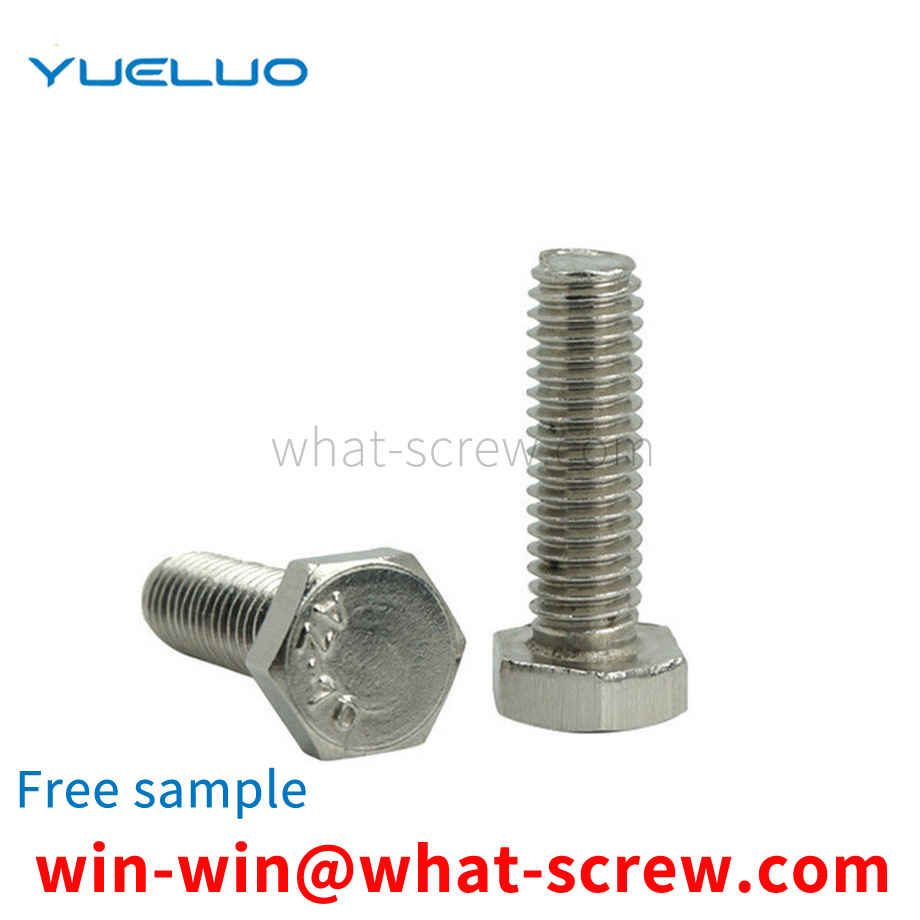In response to the above situation, Yueluo uses various methods to fasten the locked nuts and bolts in actual operation, such as super glue, electric welding, secondary reinforcement by perforation, etc., but there is still no way to get it right Solve the phenomenon that the nut is loose and displaced.
A rivet is a nail-shaped object used to connect two parts with a through hole and a cap at one end. It is mainly used in riveting to connect the riveted parts by its own deformation or interference.
During the tightening process of the screw, do not use excessive force, otherwise the product will be damaged. The traditional bolt locking adopts manual operation, which is inefficient and insufficient force. In the existing screw locking device, before locking the screw, the locking force of the screw is tested, but the test equipment is set separately, resulting in a complicated structure. In addition, in the existing screw locking device, when the screw is locked, the position of the screw hole is not corrected, so that the screw often causes damage to the product during the tightening process.
Fasteners are a class of mechanical parts that are used for fastening connections and are widely used. It is used in a wide range of industries, including energy, electronics, electrical appliances, machinery, chemical industry, metallurgy, mold, hydraulic and other industries, in various machinery, equipment, vehicles, ships, railways, bridges, buildings, structures, tools, instruments, chemicals, instruments And supplies, etc., you can see all kinds of fasteners, which are widely used mechanical basic parts. In the fields of listed rails, construction machinery, etc., due to the harsh application environment, the requirements for fasteners are more stringent. If the fasteners are loosened, it may lead to serious consequences, resulting in a large amount of property damage, even serious life cost.
The quality of electroplating is measured primarily by its corrosion resistance, followed by appearance. Corrosion resistance is to imitate the working environment of the product, set it as the test condition, and perform a corrosion test on it. The quality of electroplating products shall be controlled from the following aspects: 1. Appearance: Partial uncoated, scorched, rough, gray, peeling, crusted, and obvious stripes are not allowed on the surface of the product, and pinholes, pitting, and black plating are not allowed. Slag, loose passivation film, cracks, peeling off and serious passivation marks. 2. Coating thickness: The operating life of fasteners in corrosive atmosphere is proportional to its coating thickness. The general recommended thickness of economical electroplating coating is 0.00015in ~ 0.0005in (4 ~ 12um). Hot-dip galvanizing: the standard average thickness is 54 um (43 um for diameter ≤ 3/8), and the minimum thickness is 43 um (37 um for diameter ≤ 3/8). 3. Coating distribution: With different deposition methods, the aggregation method of the coating on the surface of the fastener is also different. During electroplating, the coating metal is not uniformly deposited on the peripheral edge, and a thicker coating is obtained at the corners. In the threaded portion of the fastener, the thickest coating is located on the thread crest, gradually thinning along the flank of the thread, and the thinnest deposit is at the bottom of the thread, while hot dip galvanizing is just the opposite, the thicker coating is deposited on the inside corners and On the bottom of the thread, mechanical plating tends to deposit the same metal as hot-dip plating, but is smoother and has a much more uniform thickness over the entire surface [3]. 4. Hydrogen embrittlement: During the processing and processing of fasteners, especially in the pickling and alkali washing before plating and the subsequent electroplating process, the surface absorbs hydrogen atoms, and the deposited metal coating then traps hydrogen. When the fastener is tightened, the hydrogen is transferred towards the most stressed parts, causing the pressure to build up beyond the strength of the base metal and producing microscopic surface cracks. Hydrogen is particularly active and quickly seeps into the newly formed fissures. This pressure-rupture-penetration cycle continues until the fastener breaks. Usually occurs within a few hours after the first stress application. To eliminate the threat of hydrogen embrittlement, fasteners are heated and baked as soon as possible after plating to allow hydrogen to seep out of the plating, typically at 375-4000F (176-190C) for 3-24 hours. Since mechanical galvanizing is non-electrolyte, this virtually eliminates the threat of hydrogen embrittlement, which exists in galvanizing using electrochemical methods. In addition, due to engineering standards, it is forbidden to hot-dip galvanize fasteners with hardness higher than HRC35 (Imperial Gr8, metric 10.9 and above). Therefore, hydrogen embrittlement rarely occurs in hot-dip plated fasteners. 5. Adhesion: Cut or pry off with a solid tip and considerable pressure. If, in front of the blade tip, the coating peels off in flakes or skins, exposing the base metal, the adhesion shall be considered insufficient.
We have many years of experience in the production and sales of screws, nuts, flat washers, etc. The main products are: combination pan head hexagon socket head bolts, handle cap hand-tightened nut screws, flat-shaped double round keys, countersunk head Torx bolts and other products, we can provide you with products such as Provide the right fastener solution for you.



















 Service Hotline
Service Hotline




